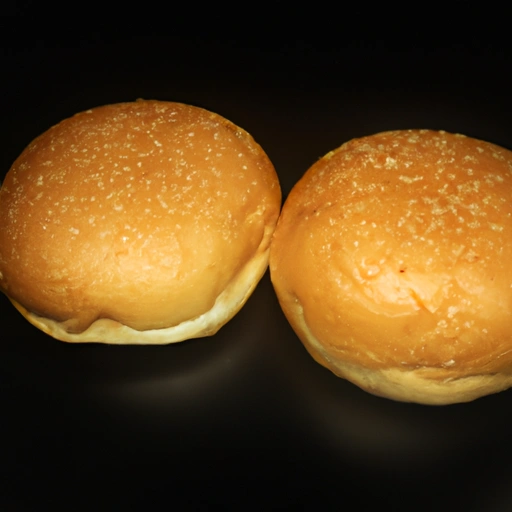Hamburger Bun
Description

The hamburger bun is a staple in both fast food and home-cooked meals. It serves as the bread base for one of the world's most beloved sandwiches—the hamburger. Typically round, with a soft yet sturdy texture, hamburger buns can be made from a variety of flours and grains, providing different flavors and nutritional profiles. They may also contain sweeteners, dairy, and preservatives to enhance flavor and shelf life.
Common uses
Hamburger buns are most commonly used to encase ground meat patties, but they are also versatile enough to be used with a variety of other fillings such as grilled chicken, fish patties, and a wide range of plant-based alternatives, making them suitable for vegetarians and vegans alike.
Nutritional value
Calories
A standard hamburger bun typically contains about 120 to 150 calories (500 to 630 kilojoules).
Protein
The protein content of a hamburger bun can range from 3 to 5 grams, depending on the size and ingredients used.
Fat
Hamburger buns generally contain about 1 to 3 grams of fat, with some of that possibly coming from added butter or oil.
Carbohydrates
Carbohydrates are the primary source of energy in a hamburger bun, with amounts typically ranging from 20 to 30 grams.
Vitamins
Some hamburger buns are enriched with vitamins such as B vitamins (niacin, thiamin, riboflavin, and folic acid).
Minerals
They may also contain minerals like iron and calcium, especially if they are made with enriched flour.
Health benefits
While hamburger buns are often seen as a source of empty calories, those made with whole grains can offer dietary fiber, which aids in digestion and can contribute to heart health. Enriched buns can provide a modest source of B vitamins necessary for energy metabolism.
Potential risks
Hamburger buns made with refined flour are lower in fiber and may contribute to blood sugar spikes. Additionally, commercially prepared buns may contain high levels of sodium and preservatives, which can be a concern for those monitoring their salt intake.
Common recipes
Hamburger buns are most famously used for classic American hamburgers and cheeseburgers. They also find their way into pulled pork sandwiches, veggie burger creations, and as a base for various sliders.
Cooking methods
While hamburger buns can be used straight from the package, they are often toasted to add texture and flavor. This can be done on a grill, in a toaster, or in an oven. Some recipes call for buttering the buns before toasting for an extra rich taste.
Pairing with other ingredients
Hamburger buns pair well with condiments such as ketchup, mustard, mayonnaise, and relish, as well as toppings like lettuce, tomato, onions, pickles, and cheese.
Summary
Hamburger buns are a universal component of the modern culinary landscape, with a rich history and a simple yet essential role in sandwich-making. They come in various forms, from the classic white bun to whole grain options, providing versatility in nutritional content and culinary uses. Whether used in traditional hamburger recipes or as a creative component in a new dish, the hamburger bun is an indispensable ingredient in kitchens worldwide.